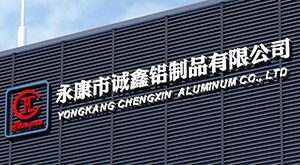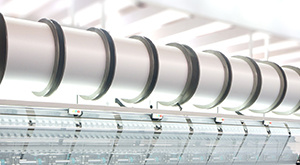29
2024
-
07
Revolutionizing Textile Production: The Latest Advancements in Air Jet Loom Technology
Author:
Revolutionizing Textile Production: The Latest Advancements in Air Jet Loom Technology
Table of Contents
- 1. Introduction to Air Jet Loom Technology
- 2. The Evolution of Textile Machinery
- 3. How Air Jet Looms Work
- 4. Benefits of Air Jet Loom Technology
- 5. Applications in Modern Textile Production
- 6. Latest Advancements in Air Jet Looms
- 7. Sustainability in Textile Manufacturing
- 8. Future Trends in Air Jet Loom Technology
- 9. Frequently Asked Questions
- 10. Conclusion
1. Introduction to Air Jet Loom Technology
The textile industry has undergone significant transformations in recent decades. A standout among these innovations is **air jet loom technology**, which has revolutionized the production processes in textile manufacturing. Unlike traditional weaving techniques, air jet looms utilize high-speed jets of air to propel the weft yarn through the warp, enhancing efficiency and reducing production time. This article delves into the latest advancements in air jet loom technology, focusing on its benefits, applications, and future trends in textile manufacturing.
2. The Evolution of Textile Machinery
The evolution of textile machinery dates back to the Industrial Revolution, where handlooms turned into mechanical looms. This shift marked the beginning of mass textile production. Over time, advancements such as shuttle looms, rapier looms, and projectile looms emerged, each introducing new ways to increase productivity and improve fabric quality. The introduction of **air jet looms** in the late 20th century marked a significant milestone, setting the stage for a new era in textile production.
2.1 Early Developments
The first air jet looms appeared in the 1950s, primarily in Japan. These machines were designed to address the limitations of shuttle looms, particularly in terms of speed and versatility. Early models laid the groundwork for subsequent innovations, focusing on improving the efficiency of the weaving process and reducing the necessary downtime for maintenance.
2.2 Maturation of Technology
By the 1980s, air jet loom technology had matured significantly. Manufacturers began implementing electronic controls and automation, enhancing machine performance and user-friendliness. This evolution allowed for more intricate designs and greater flexibility in fabric production.
3. How Air Jet Looms Work
Air jet looms operate on a unique principle that differentiates them from other types of weaving machines. The process leverages **compressed air** to insert the weft yarn into the shed formed by the warp threads. This method provides several advantages, such as increased weaving speed and improved fabric quality.
3.1 Mechanism of Action
In air jet looms, the weft yarn is fed into the machine, where it is positioned within the warp threads. At the right moment, a burst of compressed air is released, propelling the weft yarn across the loom. This rapid insertion significantly reduces the time taken to complete a weaving cycle compared to traditional methods.
3.2 Speed and Efficiency
Air jet looms can operate at speeds of up to **1,600 picks per minute**. This remarkable speed translates into increased production rates and lower operational costs. Moreover, the use of air for weft insertion minimizes wear on the machinery, leading to longer service life and reduced maintenance requirements.
4. Benefits of Air Jet Loom Technology
The advantages of air jet loom technology extend beyond mere speed. Manufacturers are increasingly adopting these advanced machines due to their versatility, efficiency, and quality of output.
4.1 Enhanced Fabric Quality
Air jet looms produce high-quality fabrics with fewer defects. The precise control over yarn insertion ensures greater uniformity in fabric density and texture. Additionally, the reduced friction during the weaving process minimizes yarn breakage, further enhancing fabric quality.
4.2 Versatility in Fabric Production
Another major advantage is the versatility of air jet looms. They can handle a wide range of fabric types, from lightweight to heavier materials, and accommodate various yarn compositions, including cotton, polyester, and blended fibers. This adaptability makes them suitable for a diverse array of textile applications.
4.3 Cost-Effectiveness
While the initial investment in air jet looms may be higher than traditional looms, the long-term savings are significant. The increased efficiency, reduced maintenance costs, and lower energy consumption deliver a strong return on investment. Factories can produce more fabric within a shorter time frame, ultimately enhancing profitability.
5. Applications in Modern Textile Production
Air jet looms are making their mark across various sectors within the textile industry. Their applications span apparel manufacturing, home textiles, technical textiles, and more.
5.1 Apparel Manufacturing
In the apparel sector, air jet looms are utilized to produce fabrics that require intricate patterns and designs. Their ability to handle a wide variety of yarns allows garment manufacturers to experiment with textures and styles.
5.2 Home Textiles
The home textiles industry benefits from the speed and efficiency of air jet looms in producing fabrics for upholstery, curtains, and bedding. The quality and durability of the final products meet the demands of both manufacturers and consumers.
5.3 Technical Textiles
Air jet looms also play a significant role in the production of technical textiles. These specialized fabrics are used in a variety of applications, including automotive interiors, medical textiles, and industrial applications. The precision and strength of textiles produced on air jet looms are essential for these demanding applications.
6. Latest Advancements in Air Jet Looms
The textile industry continues to innovate, and air jet loom technology is no exception. Recent advancements focus on increasing automation, integrating smart technologies, and enhancing sustainability.
6.1 Automation and Smart Technologies
The latest models of air jet looms incorporate **Industry 4.0** principles, enabling real-time monitoring and control. Manufacturers can now analyze machine performance data, predict maintenance needs, and optimize production schedules through integrated software solutions.
6.2 Energy Efficiency Improvements
Energy consumption is a critical consideration in textile manufacturing. Recent advancements in air jet loom technology have led to designs that consume less energy while maintaining high production rates. These improvements not only reduce operational costs but also contribute to a more sustainable industry.
6.3 Innovations in Yarn Handling
New yarn handling techniques and attachments for air jet looms enhance the ability to process a wider range of yarn types. Innovations such as automatic yarn splicing and monitoring systems minimize downtime due to yarn breaks and improve overall efficiency.
7. Sustainability in Textile Manufacturing
Sustainability has emerged as a crucial factor in all manufacturing sectors, including textiles. Air jet looms contribute to more sustainable practices in several ways.
7.1 Reduced Waste Generation
The efficiency of air jet looms results in lower fabric waste during the production process. Precise yarn handling and insertion reduce the likelihood of defects, leading to better utilization of raw materials.
7.2 Lower Water and Chemical Usage
Modern air jet looms are engineered to work effectively with fewer chemicals and less water. This reduction supports sustainable dyeing and finishing processes, aligning with the industry's shift toward environmentally friendly practices.
7.3 Energy Conservation
With advancements in energy efficiency, air jet looms are playing a vital role in minimizing the carbon footprint of textile manufacturing. Manufacturers adopting these technologies can significantly reduce their energy consumption, contributing to global sustainability goals.
8. Future Trends in Air Jet Loom Technology
The future of air jet loom technology is promising, with several trends poised to shape the next generation of textile production.
8.1 Increased Customization
As consumer preferences shift towards personalized textiles, air jet looms will adapt to produce customized fabrics with unique designs and specifications. Innovations in digital weaving technology will allow manufacturers to respond swiftly to market demands.
8.2 Greater Integration with Artificial Intelligence
The integration of **artificial intelligence (AI)** in textile manufacturing is on the rise. AI technologies can optimize weaving patterns, predict maintenance requirements, and enhance the overall operation of air jet looms, driving efficiency and reducing downtime.
8.3 Collaborative Robotics
The use of collaborative robotics, or cobots, alongside air jet looms will likely increase. These robots can assist operators in various tasks, from loading raw materials to quality inspection, thereby improving overall productivity and worker safety.
9. Frequently Asked Questions
9.1 What is an air jet loom?
An air jet loom is a type of weaving machine that uses jets of compressed air to insert the weft yarn into the fabric structure, providing high-speed and efficient fabric production.
9.2 How does an air jet loom differ from a traditional loom?
Air jet looms operate using air to insert weft yarns, while traditional looms rely on mechanical methods like shuttles or rapier systems. Air jet looms are typically faster, more efficient, and produce higher-quality fabrics.
9.3 What are the advantages of using air jet looms in textile production?
The advantages include enhanced fabric quality, increased production speed, versatility in handling various yarn types, and cost-effectiveness over time due to lower maintenance and operational costs.
9.4 Are air jet looms sustainable?
Yes, air jet looms contribute to sustainability by reducing waste, lowering water and chemical usage, and improving energy efficiency in textile manufacturing.
9.5 What future trends can we expect in air jet loom technology?
Future trends include increased customization capabilities, greater integration of artificial intelligence, and the use of collaborative robotics to enhance productivity and efficiency in textile production.
10. Conclusion
Air jet loom technology is at the forefront of revolutionizing textile production. With its speed, efficiency, and ability to enhance fabric quality, it is no wonder that manufacturers are increasingly adopting this innovative technology. The latest advancements, focusing on automation, sustainability, and smart technologies, are paving the way for a more efficient and environmentally friendly textile industry. As we look to the future, the potential for increased customization and the integration of advanced technologies will continue to shape the landscape of textile manufacturing. Embracing these changes not only benefits manufacturers but also meets the evolving demands of consumers for high-quality, sustainable fabrics.
Related news
MESSAGE
You are welcome to, we will serve you faithfully!

Follow us
Add:No. 161, Huachuan Road, Chengxi New District, Yongkang City, Zhejiang Province
Tel: 86-579-87294296 87208200(Manager Shu)
Fax: 0579-87294297

















